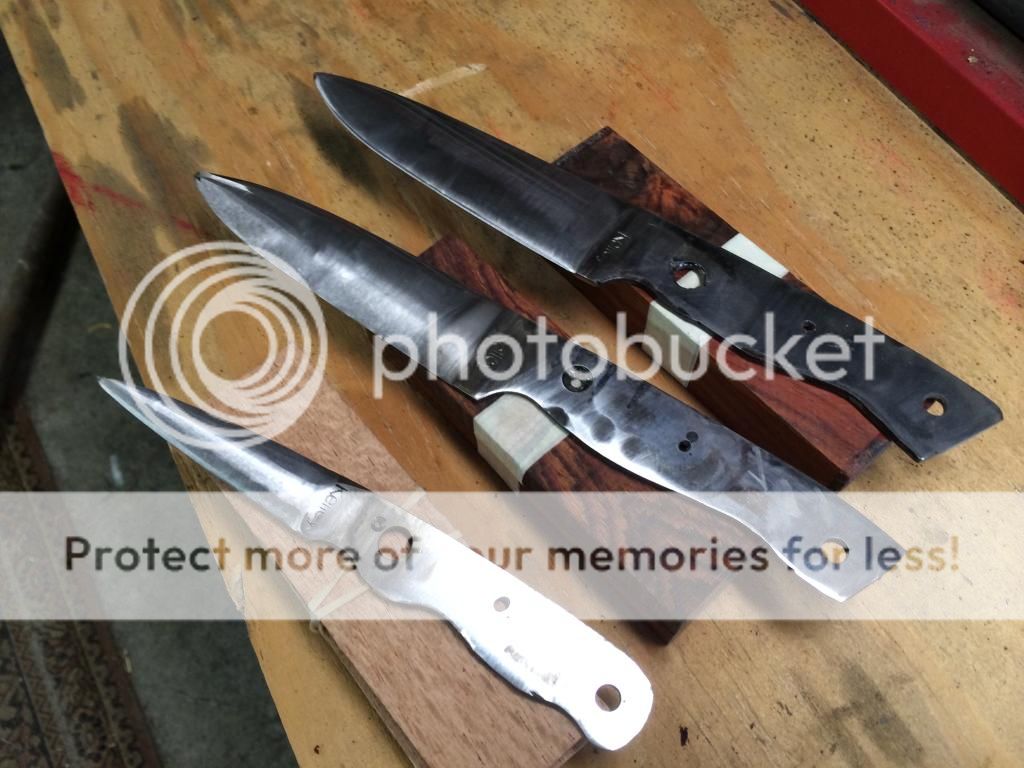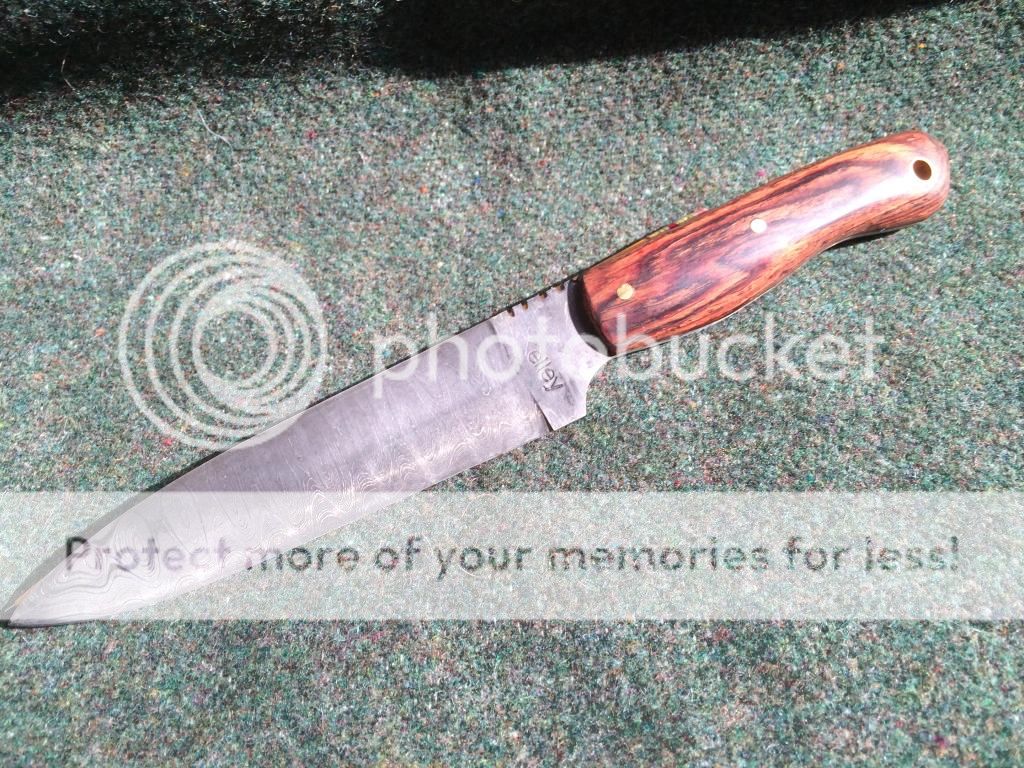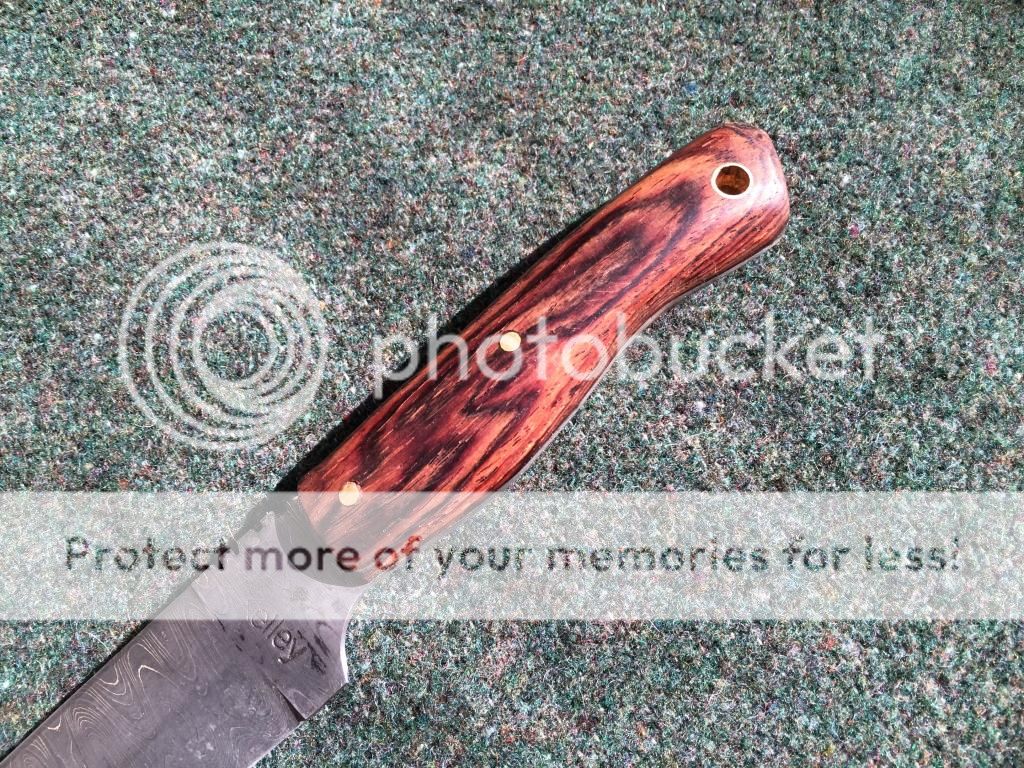- Joined
- Dec 30, 2012
- Messages
- 193
Steve, when using the damascus the pattern won't show up again until you etch it in Ferro-Chloric acid. Once your have finished the grind, heat treatment, and hand sanding put in a container filled with ferro-chloric acid and depending how deep you want the etch is how long you should keep it. I've seen several people use PVC pipe with one end capped off for the container.




